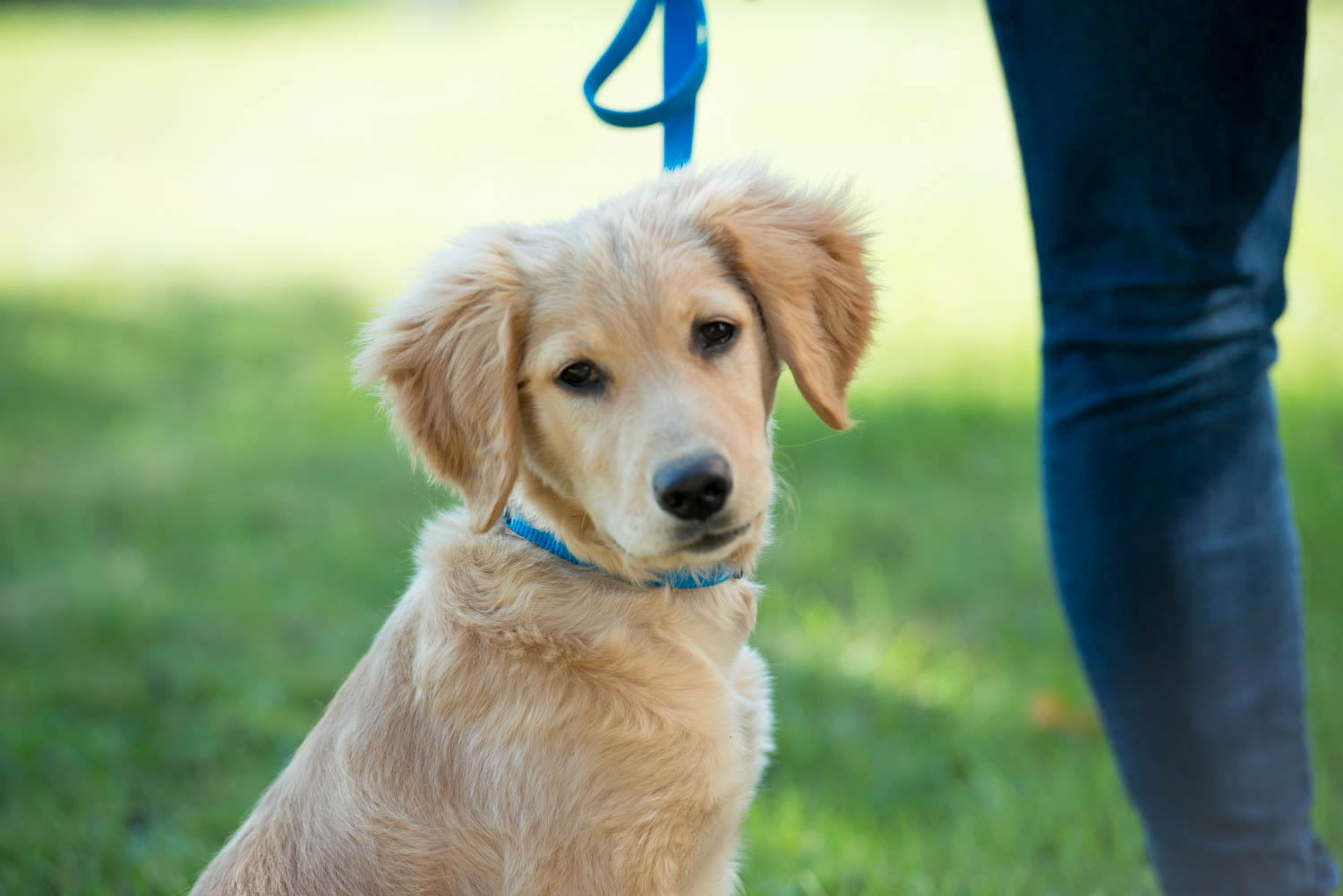How to Crate Train a Puppy
By Terrain D.O.G.® • 3 minute read

At Terrain D.O.G.®, one of the first skills we recommend teaching your puppy is crate training. Apart from being an incredible tool for housebreaking, a crate also serves as a cozy place for your puppy to relax and feel secure during its adjustment to a new environment. Not to mention, crates are the safest option for your pet during travel. Even if you think, “I don’t plan on traveling with my dog,” you must remember that they’ll need to travel to vet appointments and dog sitters. Crate training at an early
age is, hands down, the best way for your dog to feel comfortable traveling in a crate in the future.
When shopping for a crate, you may be tempted to buy one that the puppy can “grow into.” This is not recommended, as your puppy will most likely go to the bathroom in a crate that gives them too much space. A puppy should be able to stand up, turn around and lie down in a crate, but any more space than that could create bad habits. We also don’t recommend putting bedding in the crate because they will likely chew it up and/or swallow it.
When it comes to crate training, there are a few techniques you can use. You can begin crate training by simply allowing your puppy to be near the crate and keeping the crate door open. Gauge your puppy’s feelings toward the crate. Put their food in the same proximity as it, and move the food a little bit closer to it when they are comfortable. As the days go on, you can continue moving the food closer and closer until the food is inside the crate and pushed to the back.
You can also use rewards such as treats and affection to encourage them to go into the crate. Try placing a treat inside the crate and saying a queue word such as “kennel.” (The hope is that eventually when your puppy hears that word, they will go inside with or without a treat.) If your puppy seems comfortable around the crate, you can also try placing them inside it and petting them. If they seem scared, however, back off and let them leave the crate.
Only when your dog willingly goes into the crate and seems comfortable should you attempt to close the door. Once you are at this point, you must teach your pup to stay in the crate quietly. If they don’t, do not pay attention to them until they are quiet. Giving them attention when they are making noise will only reinforce that behavior.
Keep your puppy in the crate for short periods of time at first. As they grow, you can gradually extend the time you keep them inside their crate; however, it should never get to the point when they are in the crate more than they are out of it. They need exercise and socialization just like we do.
When you do let them out, do not act in a way that excites the puppy. If you make letting them out of their crate a big production, they may start to feel like being out of the crate is better than being in it. Once they are out, immediately take them outside to go to the bathroom.
Crate training, if done properly, in an invaluable tool that will benefit you and your dog throughout their lifetime. It is an important part of potty training, and it allows your dog to feel safe during future
travels. It is important to note that the crate should never be used as a form of punishment. The crate should always be your puppy’s place of relaxation and security.
Feel free to ask questions or share your experience in the comments below.
Written by Christina
Keim, Terrain D.O.G.® team member





